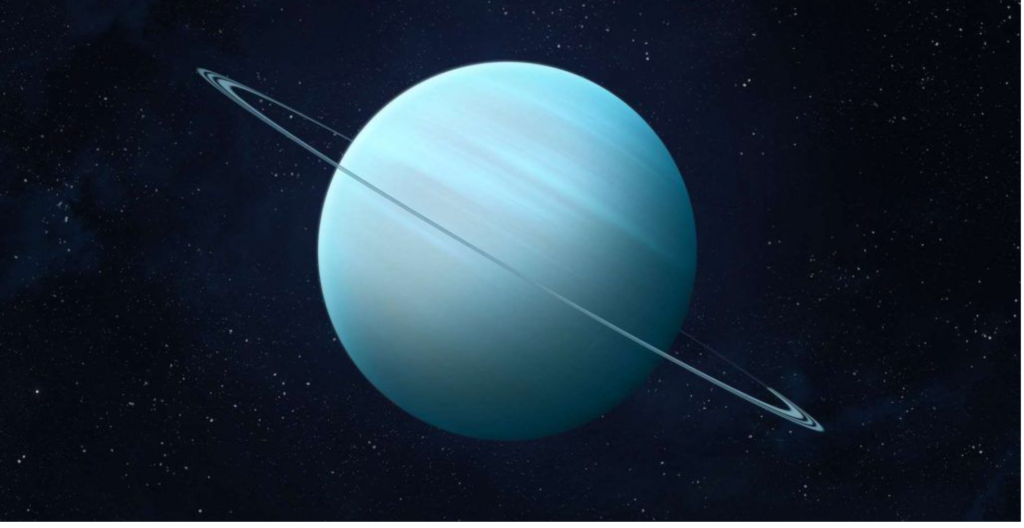
Scientists from NASA have discovered a vortex of relatively warm air swirling above Uranus’ north pole, offering solid proof of a cyclone’s existence for the first time. A telescope in New Mexico was used to observe the unusual event, which contributed to a better knowledge of the planet’s atmosphere and led to the identification of a polar cyclone with a centre one-fourth Earth’s size.
The first polar cyclone on Uranus was discovered by scientists using microwave measurements
The first polar cyclone on Uranus was discovered by scientists using microwave measurements. The Very Large Array radio telescope allowed researchers to see through Uranus’s clouds. They concluded from this that the air at the north pole was relatively warm and dry, which according to NASA are characteristics of a strong cyclone. The data was gathered in 2015, 2021, and 2022. The revelation has altered our picture of Uranus, which when NASA’s Voyager 2 probe passed by the massive, ice-covered planet in January 1986, first appeared to be atmospherically inert.
“While the general makeup of its atmosphere and interior are similar to Neptune – as far as we know – Uranus has some pretty unique features,” said planetary scientist Alex Akins of NASA’s Jet Propulsion Laboratory in California, lead author of the research published in the journal Geophysical Research Letters. “It spins on its side. And even then, its magnetic field is still misaligned with its rotational axis. The atmospheric circulation and internal heat release appear weaker than Neptune, but there is still a range of dynamical features and storms that have been observed,” Akins added.
Currently, not much is known about the storm
The polar vortex swarming over Uranus is made up of methane, ammonia, and hydrogen sulphide ices rather than water vapour, the scientists discovered, in contrast to Earth’s cyclones. Furthermore, the storm doesn’t move; rather, it stays anchored to the pole. Currently, not much else is known about it. Whether they are made of rock or gas, most of the planets in our solar system have displayed symptoms of a swirling vortex near their poles. On Venus, Earth, Mars, Jupiter, Saturn, Uranus (at its south pole), and Neptune, they have previously been seen. Although the specifics vary on each planet, it is thought that the development of these vortices is caused by high-altitude atmospheric jet streams.
